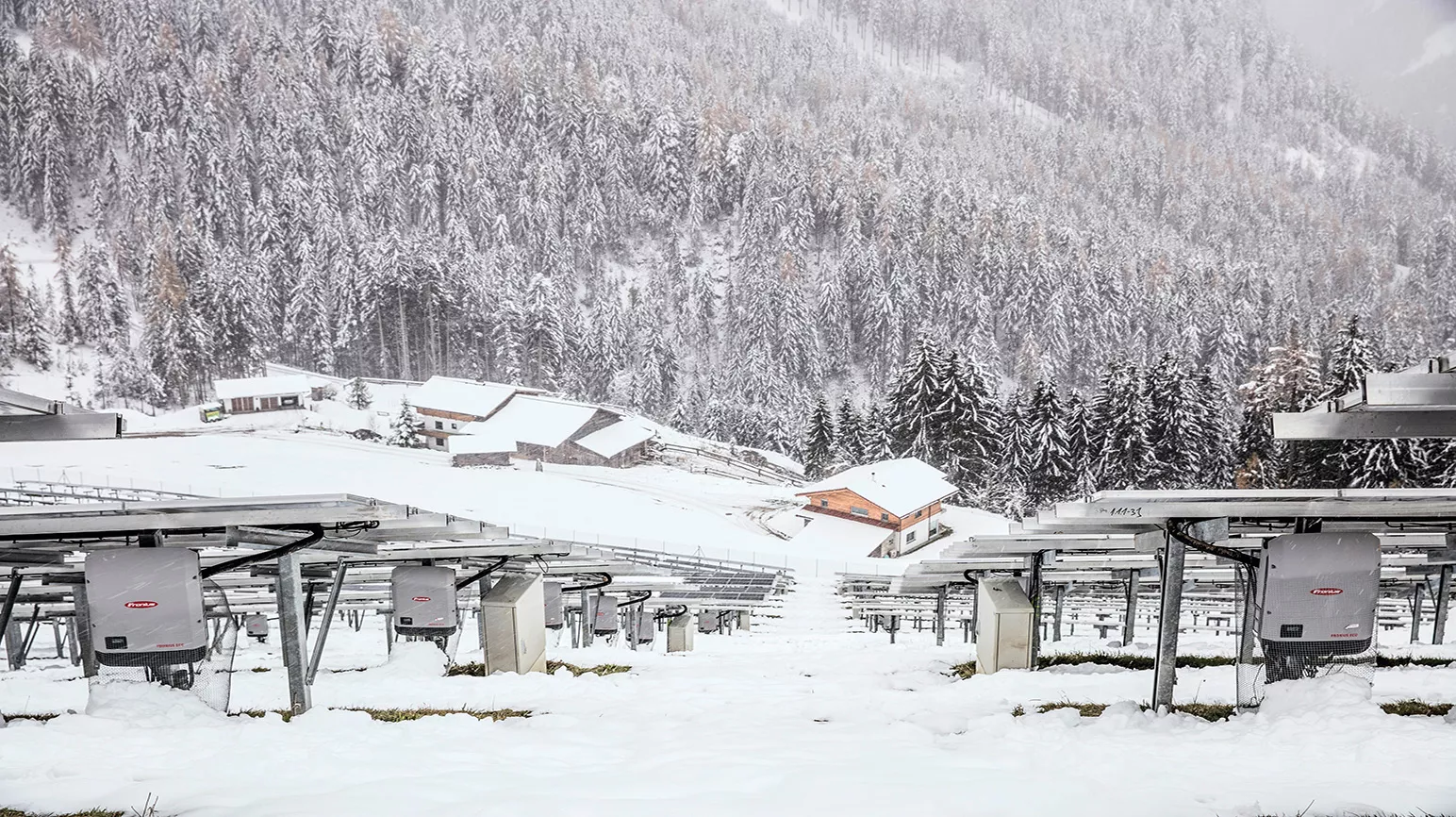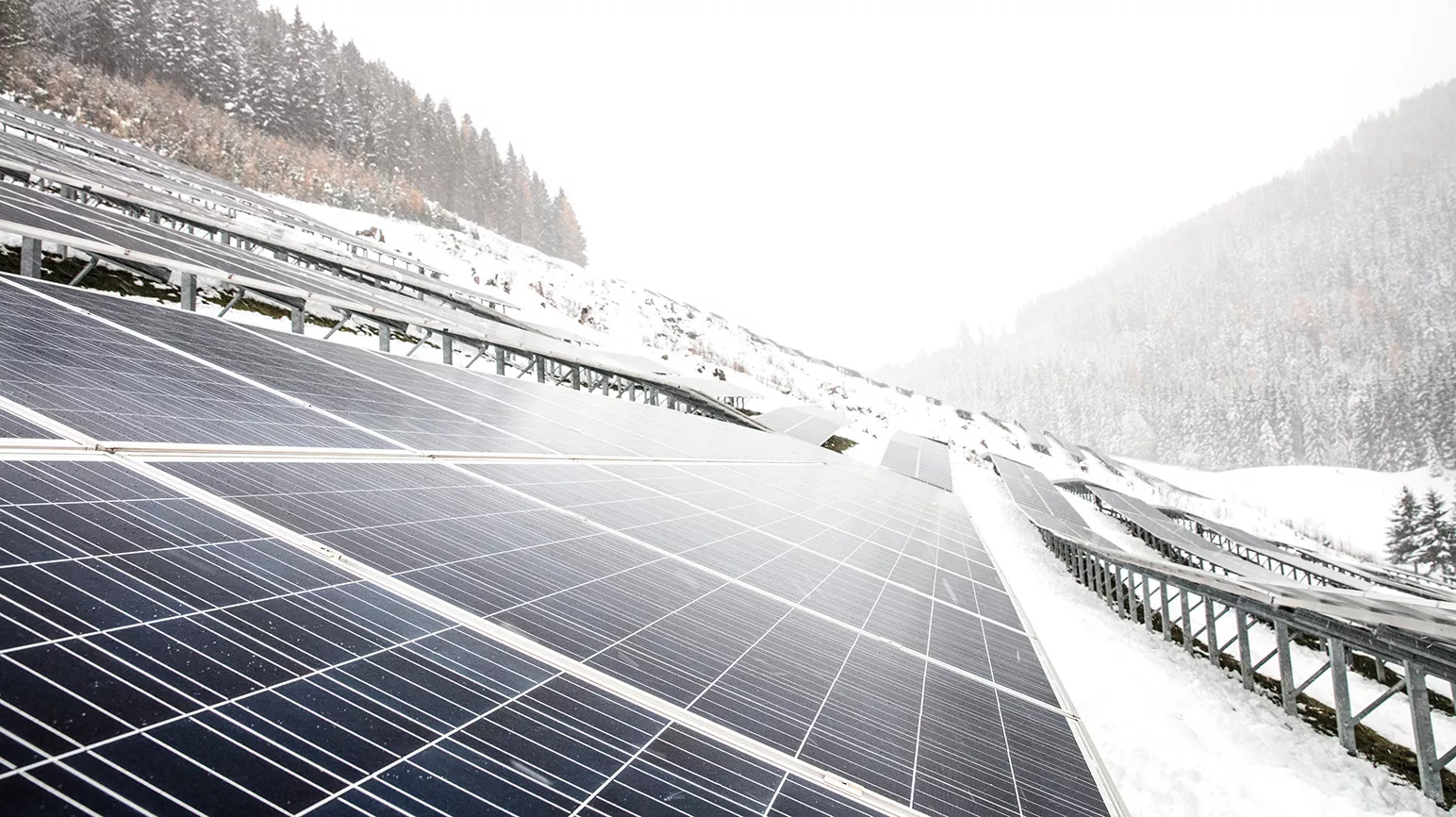How you can benefit from solar power in winter too

Optimising the orientation of the system
When choosing the ideal position of the system, the most important consideration is the regional weather conditions (as the position of the sun does not remain constant throughout the day and year).
The highest yields can be achieved when the sunlight hits the solar cell at a perpendicular angle. For this reason, a decision needs to be made as to whether the orientation is optimised for summer or takes all of the seasons into account.
Higher level of efficiency from cooler solar cells
Contrary to what you would assume, the efficiency of solar modules actually reduces as temperatures increase – by approx. 0.35 to 0.45 percent per degree of temperature increase. This means that the yield can be higher when the sun is lower on warm spring days than on hot summer days.
In higher regions, this effect can even be achieved in winter, as the air is thinner and the UV radiation therefore penetrates more intensively.
Snow on the solar modules
Your PV system is also well-equipped to deal with snowfall – regular solar modules can easily withstand a pressure of 2400 pascals (equivalent of 240 kg/m2). For regions with increased intensity, there are even modules that can be loaded with 8000 pascals.
On sloped roofs, however, the snow slides down very quickly of its own accord; whereas on flat roofs it is important to keep an eye on the load bearing reserve during periods of heavy snowfall so as not to compromise the structural stability.
Did you know that enough sunlight to produce electricity can even penetrate a 15 cm covering of snow?

At an angle of 30 to 35° the snow slides down quickly in any case. This process is accelerated by the heat generated as soon as a small part of the panel is exposed.
